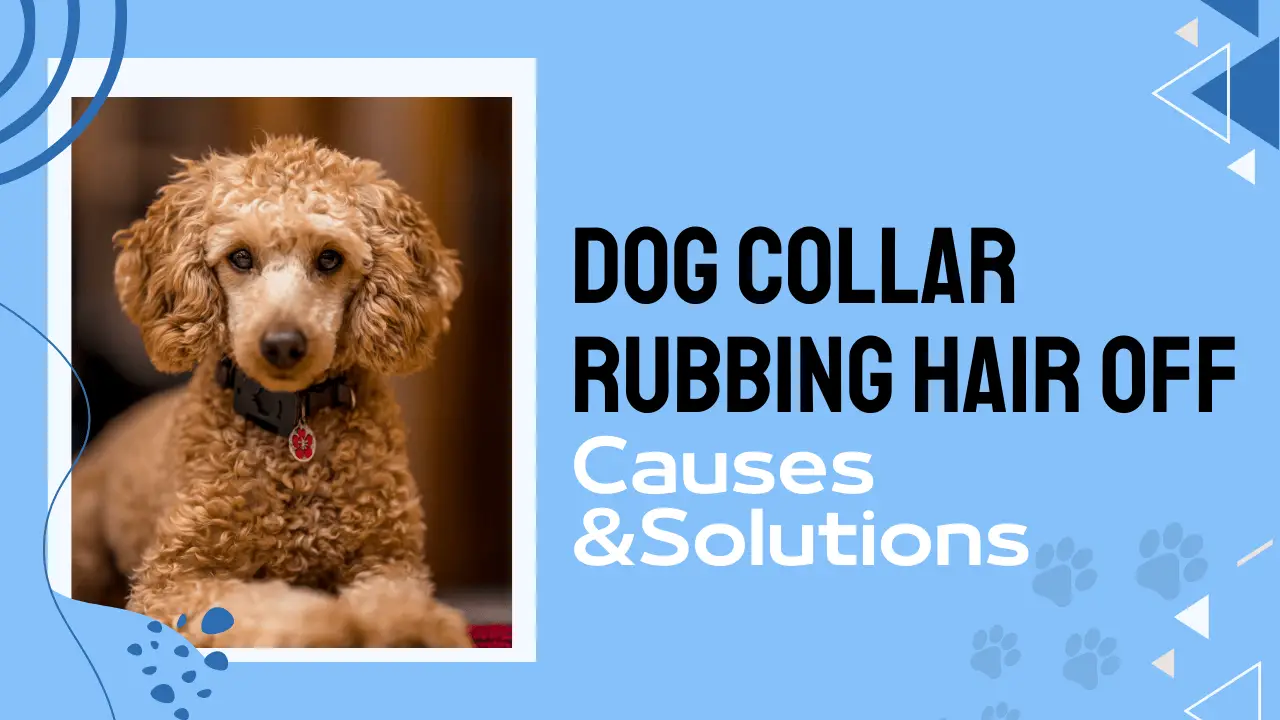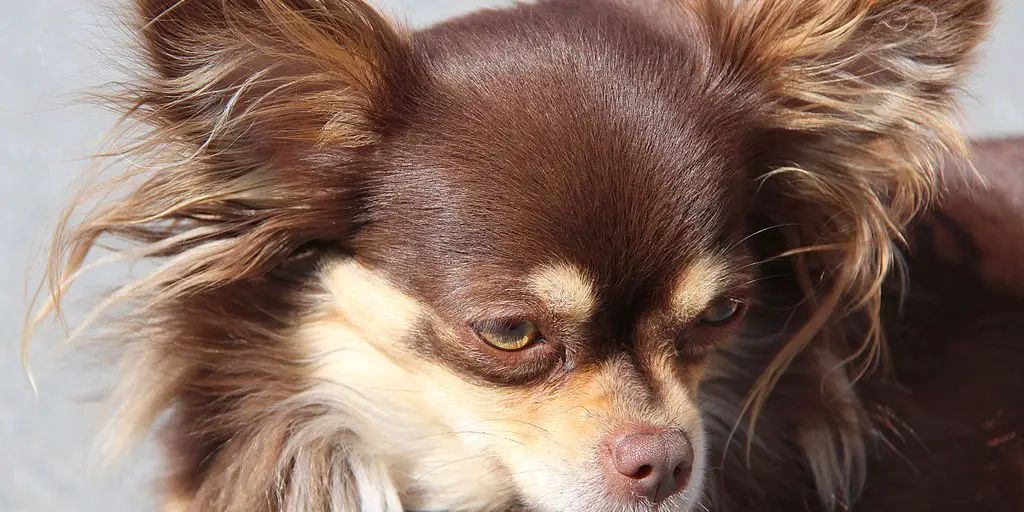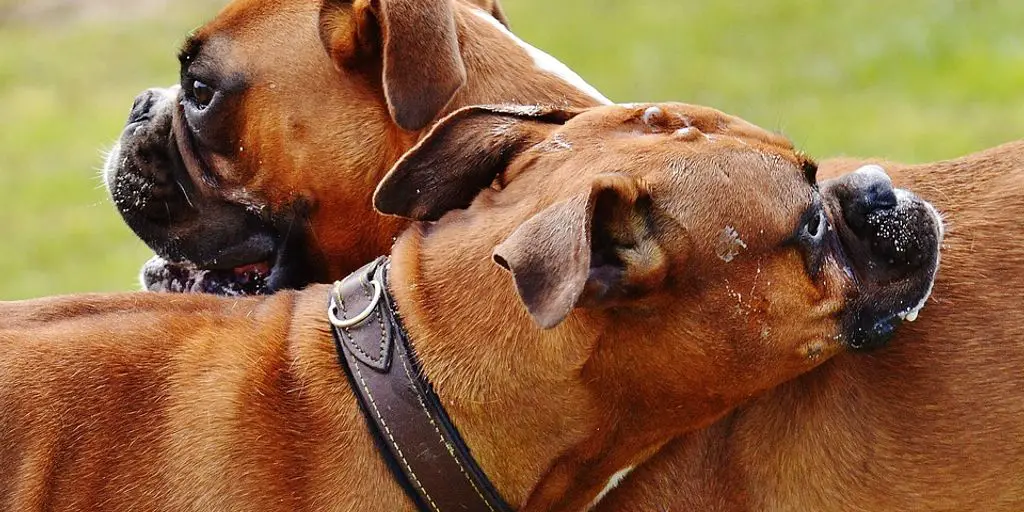Dog collars are a common accessory for pet dogs, but they can sometimes cause discomfort and even harm to the animal. One common issue is when the collar rubs against the dog’s neck and causes hair loss. This can be a painful and unsightly problem, and dog owners must understand the causes and solutions.
One of the main reasons why dog collars rub the hair off is because they are too tight. A too-small or tight coupling can cause chafing and hair loss, leading to discomfort and irritation for your dog. Another cause of hair loss is friction and rubbing. When a collar constantly rubs against your dog’s neck, it can break hair shafts and damage the skin, leading to hair thinning or bald patches over time.
If your dog’s collar is rubbing its hair off, there are several things you can do to prevent this problem. The first step is to check the collar to see if it’s too tight. If it is, adjust it to a looser setting. You can also try using a different type of collar, such as a harness or a collar made of softer material. By taking these steps, you can help your dog avoid discomfort and keep its coat looking healthy and shiny.
Table of contents
Understanding Dog Collar Rubbing
Dog collar rubbing is a common problem that many dog owners face. It occurs when the collar rubs against the dog’s neck, causing irritation and hair loss. There are several reasons why a dog’s collar might be rubbing their hair off, including:
If your dog’s collar is rubbing its hair off, addressing the issue immediately is essential. Leaving the problem untreated can lead to further irritation and discomfort for your dog.
Choose the right collar size and material for your dog to prevent collar rubbing. Additionally, you can try using a harness instead of a collar or switching to a flat collar. If your dog is still experiencing hair loss, it’s best to consult with your veterinarian to rule out any underlying health issues.
Causes of Hair Loss from Dog Collars
Dog collars are a necessary accessory for any pet owner. However, if not used properly, they can cause hair loss in dogs. This section will discuss the most common causes of hair loss from dog collars.
Tight Collars
One of the most common causes of hair loss from dog collars is a collar that is too tight. When a collar is too tight, it can rub against the skin, causing irritation and hair loss. It is important to ensure that the collar is not too tight and that you can fit two fingers between the collar and your dog’s neck.
Irritating Material
The material of the collar can also cause hair loss in dogs. Collars made of leather or nylon can cause irritation and hair loss if they are not correctly fitted or too tight. Choosing a collar made of a comfortable material for your dog is essential.
Allergic Reactions
Some dogs may be allergic to the collar’s material, causing hair loss and skin irritation. If you suspect your dog is allergic to their collar, it is important to switch to hypoallergenic material or consult a veterinarian.
Tags and Accessories
Dog collars often have tags and accessories attached, which can cause hair loss if not adequately secured. Loose tags and accessories can rub against the skin, causing irritation and hair loss. Ensuring all tags and accessories are properly secured and not too heavy for the collar is essential.
Dirty Collars
Dirty collars can also cause hair loss in dogs. Dirt and grime can build up on the collar, causing irritation and hair loss. It is essential to regularly clean your dog’s collar to prevent any buildup of dirt or grime.
In conclusion, hair loss from dog collars can be caused by several factors. Choosing a comfortable material is essential, ensuring the collar is tight, properly securing any tags and accessories, and regularly cleaning the collar to prevent hair loss and skin irritation.
Signs and Symptoms of Collar Rubbing
Several signs and symptoms may appear when a dog’s collar rubs its hair off. These symptoms can range from mild irritation to more severe skin issues. This section will discuss the most common signs and symptoms of collar rubbing.
Visible Redness
One of the most common signs of collar rubbing is visible redness on the skin. This can occur anywhere the collar comes into contact with the skin, but it is most commonly seen around the neck area. The redness may be accompanied by swelling and feel warm to the touch.
Scratching and Itching
Another sign of collar rubbing is scratching and itching. Dogs may scratch at the area where the collar is rubbing to relieve the discomfort. This can lead to further irritation and even broken skin.
Neck Sores
If the collar rubbing is severe enough, it can lead to the formation of neck sores. These sores may be open and oozing or scabbed over. They can be painful and may become infected if left untreated.
Hair Thinning and Bald Spots
Collar rubbing can also cause hair loss and bald spots. This is especially common in dogs with long hair or thick coats. The hair loss may be patchy and can occur anywhere the collar touches the skin.
In conclusion, collar rubbing can cause various signs and symptoms, from mild irritation to more severe skin issues. Monitoring your dog for these symptoms and preventing further discomfort is essential.
Preventing Collar Rubbing
If your dog’s collar is rubbing their hair off, it’s important to take action to prevent further irritation. Here are some tips to help prevent collar rubbing:
Proper Collar Size
One of the most critical factors in preventing collar rubbing is ensuring the collar fits properly. A too-tight collar can cause chafing and irritation, while a too-loose collar can slip around and cause rubbing. To determine the correct size for your dog’s collar, measure their neck and add two inches. This will give you the right size to purchase.
Choosing the Right Material
The material of the collar can also play a role in preventing rubbing. Some materials, like leather or neoprene, are more comfortable and less likely to irritate. Look for hypoallergenic materials if your dog has sensitive skin. Rolled leather collars are another option that can help prevent rubbing.
Regular Cleaning
Regular grooming can help prevent collar rubbing by keeping your dog’s coat healthy and clean. Additionally, cleaning the collar regularly can help prevent the buildup of dirt and oils that can irritate. Use a mild soap and warm water to clean the collar, and rinse it thoroughly.
Alternative Collar Styles
If your dog continues to experience rubbing despite proper sizing and cleaning, consider alternative collar styles. A harness can be a good option for dogs who pull on the leash, as it distributes pressure more evenly. A padded collar or collar with a collar pad can also help prevent rubbing by providing extra cushioning.
Remember, preventing collar rubbing is important for your dog’s comfort and health. By choosing the right size and material, cleaning the collar regularly, and considering alternative styles, you can help keep your dog comfortable and happy.
Treatment Options for Collar Rubbing
Several treatment options are available if you notice that your dog’s collar is rubbing its hair off. Here are some of the most effective ways to resolve this issue:
Removing the Collar
The first step in treating collar rubbing is to remove the collar from your dog’s neck. This will give the irritated area a break from the friction caused by the collar and allow it to start healing. You can keep your dog indoors or in a fenced area to prevent them from running away without a collar.
Applying Coconut Oil
Coconut oil is a natural remedy that can help soothe the skin and promote hair growth. Apply a small amount of coconut oil to the affected area and massage it gently into the skin. This will help to reduce inflammation and pain. The oil will also provide a protective barrier for the skin, preventing further irritation.
Seeking Veterinary Care
If the collar rubbing has caused significant pain or the skin is broken, it is essential to seek veterinary care. Your veterinarian may prescribe a hydrocortisone cream to reduce inflammation and promote healing. They may also recommend an antihistamine to reduce itching and prevent your dog from scratching the affected area.
Using Antihistamines
Antihistamines can help to reduce itching and inflammation caused by collar rubbing. Your veterinarian may recommend an over-the-counter antihistamine or prescribe a more vital medication. It is essential to follow the dosage instructions carefully and monitor your dog for any adverse reactions.
In conclusion, collar rubbing can be painful and uncomfortable for your dog. By removing the collar, applying coconut oil, seeking veterinary care, and using antihistamines, you can help alleviate your dog’s pain and promote healing.
Additional Considerations
Regarding dogs losing hair due to collar rubbing, there are a few additional considerations to remember. This section will cover some of the most important ones, including seasonal shedding and genetics, website resources, and hormonal changes.
Seasonal Shedding and Genetics
One important consideration is that some dogs are naturally more prone to shedding than others. This can be due to genetics, as some breeds are more likely to shed than others. Additionally, dogs tend to shed more during certain times of the year, such as spring and fall. This is known as seasonal shedding, a regular part of a dog’s life cycle.
If your furry friend is shedding excessively, it may be worth looking into whether any underlying health issues could be causing the problem. For example, mange is a common condition that can cause hair loss in dogs. If you suspect your pet may have mange, it is important to seek a diagnosis from a veterinarian as soon as possible.
Website Resources
Many websites and online resources are available to help pet owners find solutions to their dog’s hair loss problems. Some resources offer tips and advice on preventing hair loss due to collar rubbing, while others provide more general information about dog health and wellness.
When using website resources to find information about dog collar rubbing, it is important to ensure the information is accurate and reliable. Look for websites run by reputable organizations, such as veterinary associations or animal welfare groups.
Hormonal Changes
Finally, it is worth noting that hormonal changes can also affect a dog’s hair loss. For example, female dogs may experience hair loss due to hormonal changes during pregnancy or after giving birth. Additionally, some dogs may experience hair loss due to thyroid problems or other hormonal imbalances.
If you suspect that your dog’s hair loss may be due to hormonal issues, it is essential to consult with a veterinarian. They can help diagnose the problem and recommend appropriate treatment options.
Overall, there are many factors to consider regarding dog collar rubbing and hair loss. By staying informed and seeking help from a veterinarian, pet owners can help ensure their furry friends stay healthy and happy.
Frequently Asked Questions
How can I prevent my dog’s collar from causing chafing?
Ensure the collar fits properly to prevent your dog’s collar from causing chafing. It should be snug but not too tight. You should be able to fit two fingers between the collar and your dog’s neck. Also, consider using a collar made of a soft material, such as nylon or leather.
What are some home remedies for dog collar chafing?
If your dog’s collar is causing chafing, you can try applying a small amount of petroleum jelly or aloe vera to the affected area to soothe the skin. You can also try using a natural remedy, such as coconut oil or calendula cream, to help heal the skin.
What does collar chafing look like?
Collar chafing can cause redness, irritation, and hair loss around your dog’s neck. In severe cases, the skin may become raw and bleed. If you notice any of these symptoms, it’s important to take action to prevent further irritation.
Is it normal for dogs to lose hair around their collar?
It is not normal for dogs to lose hair around their collar. If you notice hair loss around your dog’s neck, it may be a sign that the collar is too tight or irritating. You should adjust the collar or switch to a different type of collar to prevent further hair loss.
What is the best type of collar to prevent hair loss?
The best type of collar to prevent hair loss is one that fits properly and is made of a soft material, such as nylon or leather. You may also consider using a harness instead of a collar to prevent hair loss around your dog’s neck.
How can I treat my dog’s collar chafing?
To treat your dog’s collar chafing, remove the collar and allow the skin to breathe. Clean the affected area with a mild soap and water, and apply a soothing ointment or cream. If the skin is raw or bleeding, you may need to take your dog to the vet for further treatment.



